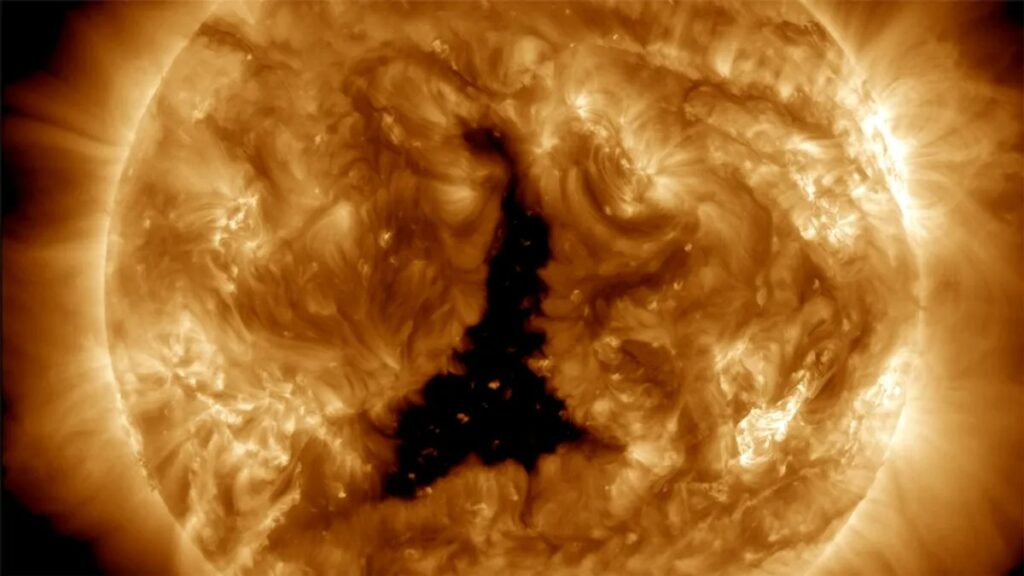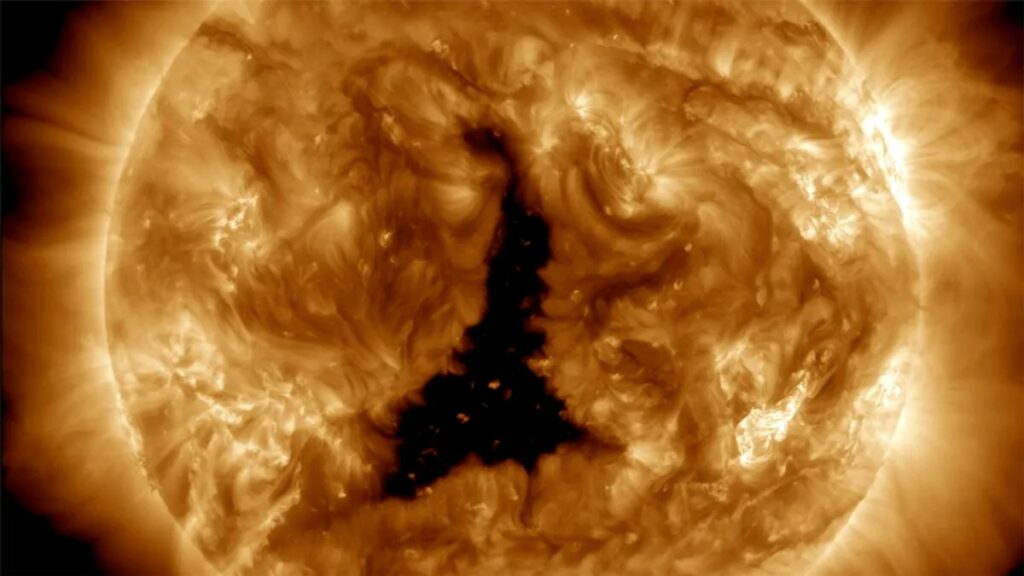
A significant disruption in the Sun’s atmosphere is set to impact Earth as a large coronal hole releases a high-speed stream of solar wind, prompting predictions of a moderate geomagnetic storm in the coming days. Captured on video by NASA’s Solar Dynamics Observatory (SDO) between December 2-4, 2023, the sunspot responsible for this solar activity is sizable but does not raise major concerns.
Sunspots, characterized by their appearance in extreme ultraviolet (EUV) and soft X-ray images, reveal cooler temperatures and lower density compared to their surroundings. The National Weather Service explains that sunspots are areas with magnetic fields approximately 2,500 times stronger than Earth’s, creating a magnetic pressure increase and a decrease in atmospheric pressure. This magnetic concentration inhibits the flow of hot gas from the Sun’s interior to the surface, resulting in lower temperatures relative to the surroundings.

While the sunspot is visually striking, it is not anticipated to pose significant issues for Earth. The Space Weather Prediction Center of the National Oceanic and Atmospheric Administration forecasts a minor to moderate geomagnetic storm set to arrive around midday (UTC) on December 4.
Solar activity follows an 11-year cycle known as the Schwabe cycle, as observed by German astronomer Heinrich Schwabe in the 19th century. The cycle includes periods of solar minimum, marked by the absence of sunspots, and solar maximum, characterized by the presence of 20 or more groups of sunspots.
Current observations indicate an increase in solar activity, with NASA revising its prediction for the next solar maximum from 2025 to a more imminent timeframe between January and October 2024. This adjustment reflects a continuous updating of forecasts based on new sunspot observations, a departure from traditional methods.

Another predictive approach focuses on terminator events, where magnetic formations at 55 degrees of latitude on both hemispheres of the Sun migrate towards the equator, canceling each other out. This phenomenon, known as a Hale cycle terminator, tends to occur up to two years after the solar minimum. By analyzing these events, scientists believe they can make more accurate predictions about the strength and timing of solar cycles.
As solar activity progresses towards its peak, experts anticipate more notable sunspots like the one observed in the recent video. The evolving understanding of solar dynamics provides valuable insights into space weather patterns, allowing for improved preparedness and monitoring of potential impacts on Earth’s geomagnetic environment.

Leave a Reply